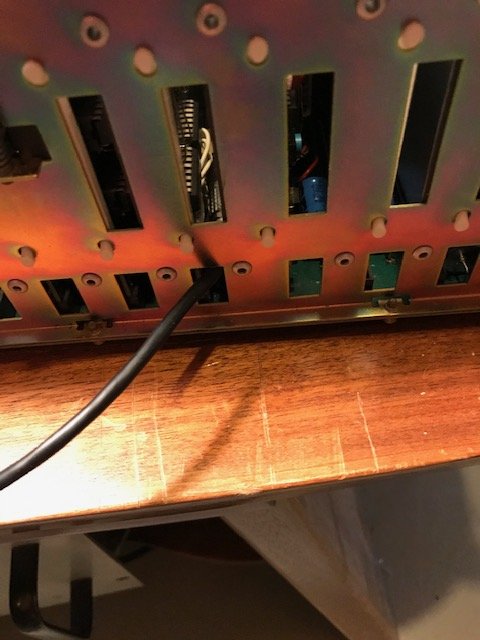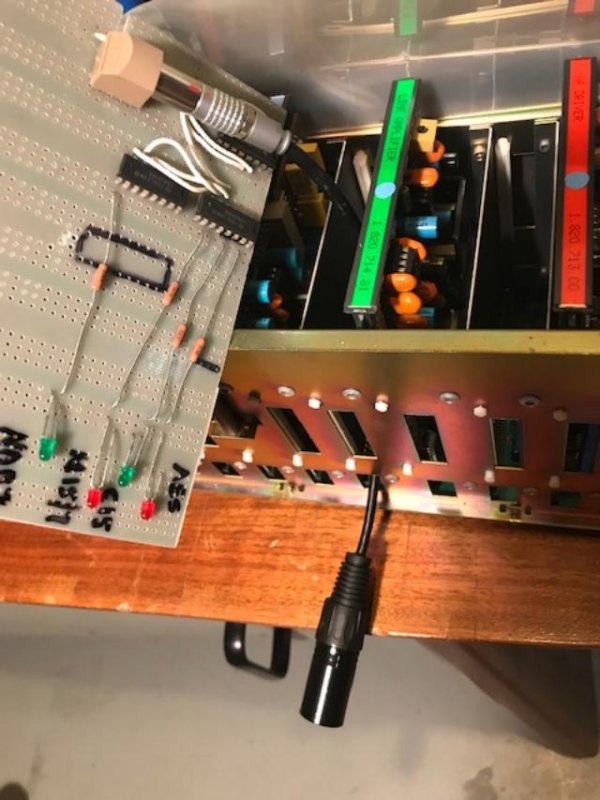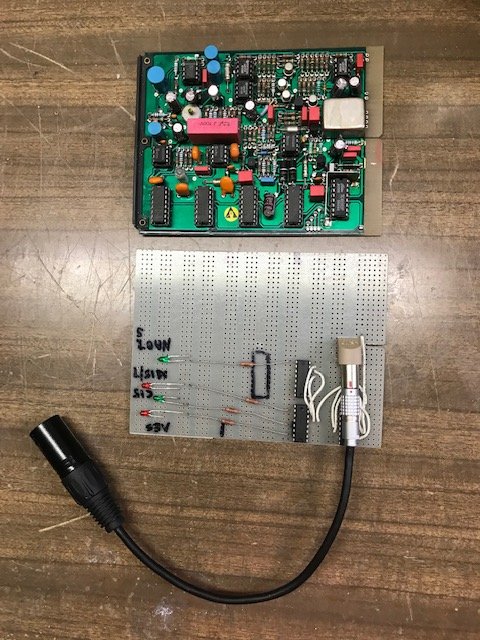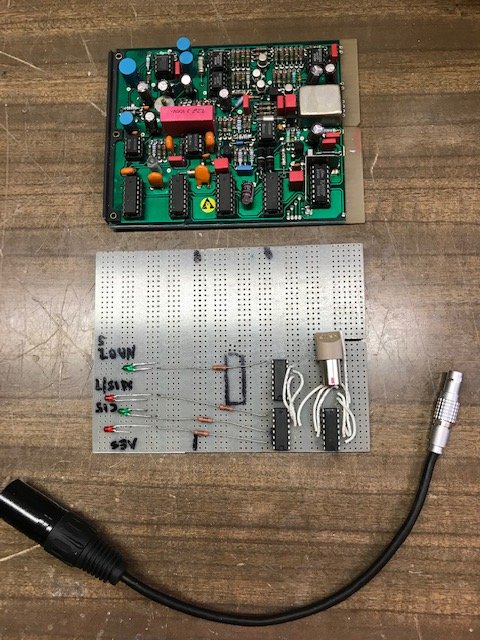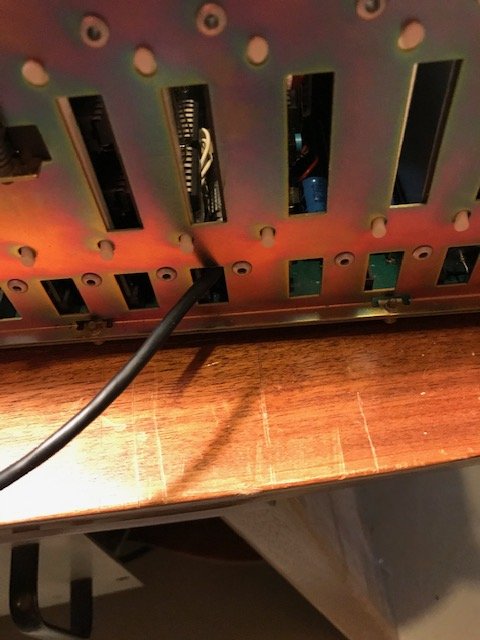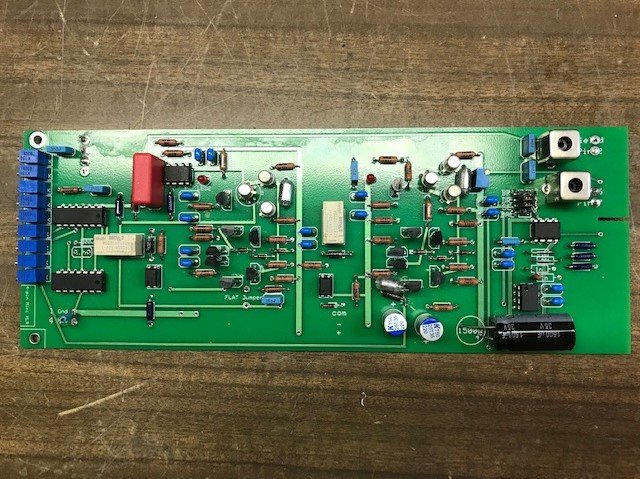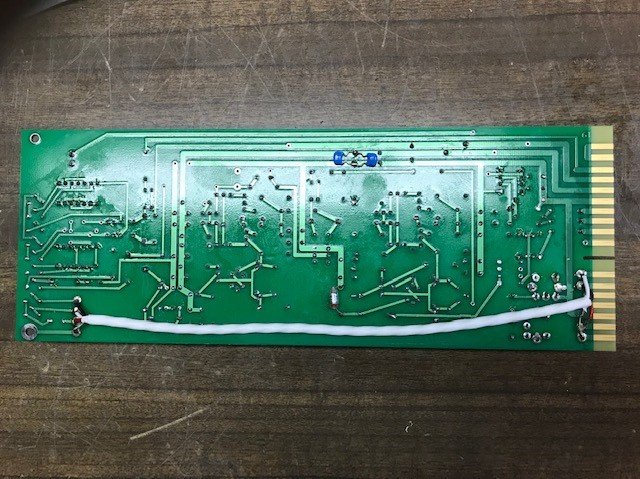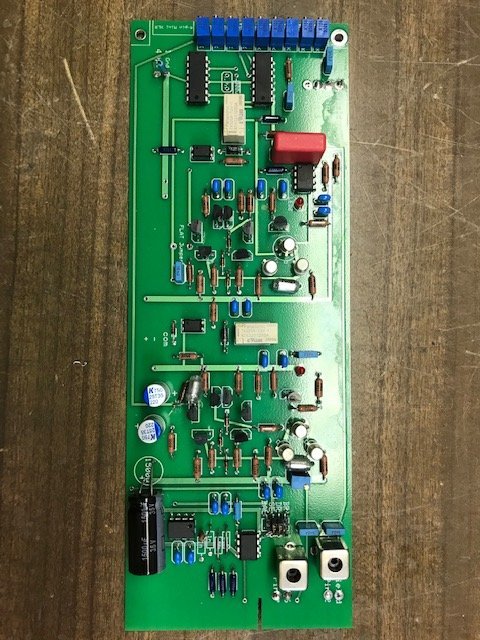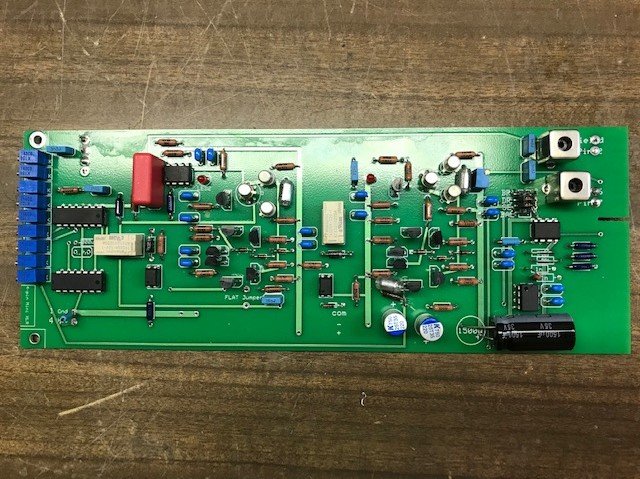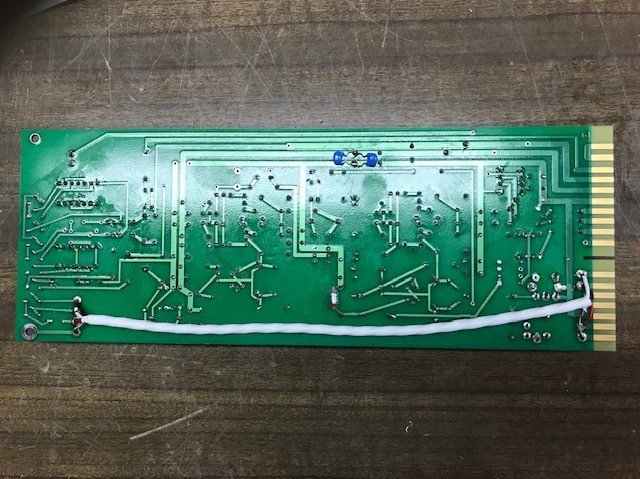Leif:
I am not at all surprised.
The Stock Studer A80 Record Card isn't half bad when you bring a very high quality single-ended signal straight in, as you have done with our NextGen Front Panel single-ended output connected as single-ended to the Studer balanced XLR inputs. (For even better results bypass the input transformer, input buffer and wiring to and from the Bridge and it's switches and pots on the record card as I outlined to you. Perhaps you can share these as well in the forum.)
As to the original Studer A810/812/820 Record Card, that is another matter entirely:
I don't recall another record design where so much effort was expended for such limited audio results; 10 NE5532 op amp sections, 3 MDACs, 11 electrolytic capacitors in the signal path, along with some 20 odd PETP, Ceramic, and polypropylene caps used in the signal path to realize opamp EQ time constants, treble and bass adjustments, filters, etc.
(To put this in perspective: try running some 10 NE5532s - even configured as unity gain buffers - in a chain, with or without coupling capacitors - even of the best possible quality - i.e PP or Teflon - between a high quality source and and your amp input; let me know if you are able to listen to this for even a few minutes time when compared to the original source...)
And this does NOT include the Line interface (transformer or transformerless balanced inputs) with some 4 more NE5532 opamp sections and poor bipolar transistor-based parameter switching. Flexibility and microprocessor control in parameter setting :Yes; technical performance and sound quality: functional, but disappointing at best.
Like our NextGen A80 Repro Card, our NextGen A80RC record card is an all-out assault on tape record electronics. It uses just two of the same DC coupled, discrete class A operational amplifiers used in our A80 Repro card, has but 5 polypropylene film (DA<0.05%) capacitors in total used for Group delay compensation, High frequency boost, Bias Trap, and Treble adjustment in the signal path, and 1 in the DC servo.
It also features our 2-stage linear adjustable B-H tape characteristic linearizer for extended low distortion dynamic range and SNR (your 1/4" deck will perform like a 1/2" or even better).
The A80RC Record Card has completed design but is not yet in production; we are eliciting interest to purchase such a card.
In the mean time, we are completing design of our A810/812/820 repro card, and headblock preamp - now in PCB layout - using exactly the same technical approach as employed on our NextGen A80 card; if there sufficient take-up of these and interest in record, I would certainly like to do NextGen Record Cards for the A80RC, and A810/812/820.
Jeff
I am not at all surprised.
The Stock Studer A80 Record Card isn't half bad when you bring a very high quality single-ended signal straight in, as you have done with our NextGen Front Panel single-ended output connected as single-ended to the Studer balanced XLR inputs. (For even better results bypass the input transformer, input buffer and wiring to and from the Bridge and it's switches and pots on the record card as I outlined to you. Perhaps you can share these as well in the forum.)
As to the original Studer A810/812/820 Record Card, that is another matter entirely:
I don't recall another record design where so much effort was expended for such limited audio results; 10 NE5532 op amp sections, 3 MDACs, 11 electrolytic capacitors in the signal path, along with some 20 odd PETP, Ceramic, and polypropylene caps used in the signal path to realize opamp EQ time constants, treble and bass adjustments, filters, etc.
(To put this in perspective: try running some 10 NE5532s - even configured as unity gain buffers - in a chain, with or without coupling capacitors - even of the best possible quality - i.e PP or Teflon - between a high quality source and and your amp input; let me know if you are able to listen to this for even a few minutes time when compared to the original source...)
And this does NOT include the Line interface (transformer or transformerless balanced inputs) with some 4 more NE5532 opamp sections and poor bipolar transistor-based parameter switching. Flexibility and microprocessor control in parameter setting :Yes; technical performance and sound quality: functional, but disappointing at best.
Like our NextGen A80 Repro Card, our NextGen A80RC record card is an all-out assault on tape record electronics. It uses just two of the same DC coupled, discrete class A operational amplifiers used in our A80 Repro card, has but 5 polypropylene film (DA<0.05%) capacitors in total used for Group delay compensation, High frequency boost, Bias Trap, and Treble adjustment in the signal path, and 1 in the DC servo.
It also features our 2-stage linear adjustable B-H tape characteristic linearizer for extended low distortion dynamic range and SNR (your 1/4" deck will perform like a 1/2" or even better).
The A80RC Record Card has completed design but is not yet in production; we are eliciting interest to purchase such a card.
In the mean time, we are completing design of our A810/812/820 repro card, and headblock preamp - now in PCB layout - using exactly the same technical approach as employed on our NextGen A80 card; if there sufficient take-up of these and interest in record, I would certainly like to do NextGen Record Cards for the A80RC, and A810/812/820.
Jeff


